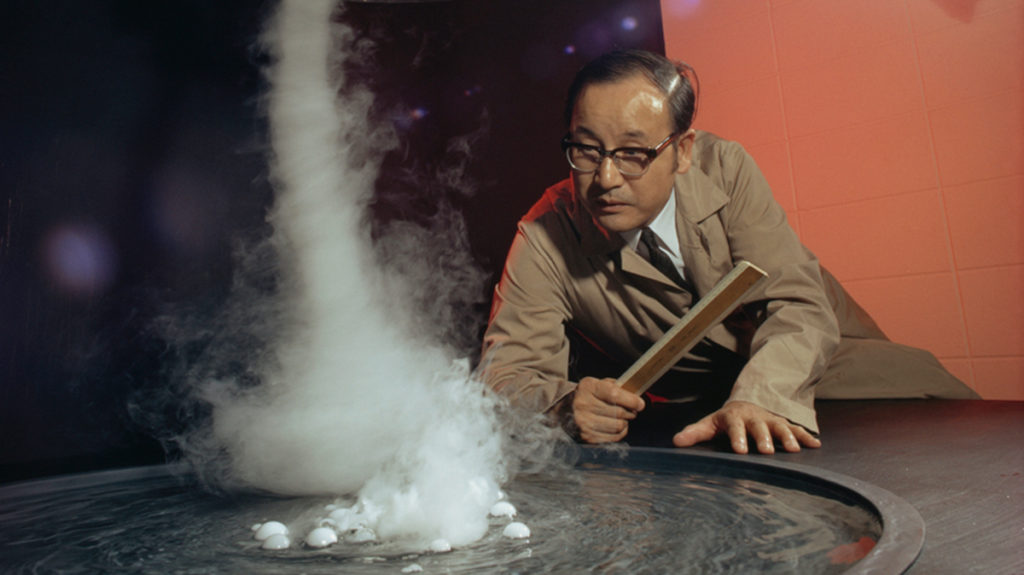
The American Experience documentary Mr. Tornado tells the story of Tetsuya Theodore Fujita, a Japanese-American scientist who devoted his life to unlocking the mysteries of severe storms. Most widely known for creating the Fujita Scale, or F-Scale, of tornado damage intensity, Fujita brought relentless, creative energy to the field of meteorology. His unique, forensic analysis of the aftermath left by destructive forces, borne out of the ashes of the world’s first atomic bombs, enabled him to map science onto a phenomenon thought to be unknowable, forever changing our understanding of tornadoes. Written, directed and produced by Michael Rossi and executive produced by Mark Samels and Susan Bellows, Mr. Tornado premieres Tuesday, May 19, 2020, 9:00-10:00 p.m. ET (check local listings) on American Eexperience on PBS, PBS.org and the PBS Video App.
Although not a trained meteorologist, Fujita had an inquiring mind and voracious appetite for comprehending the natural world. As a boy in Japan, he studied astronomy to help predict rushing tides while hunting for clams. He next devoured the sciences at Meiji College of Technology, studying engineering, geology and physics, all while continuing his amateur meteorological experiments. He envisioned a lifetime of scientific research in his beloved homeland, but World War II changed everything.
After the bombings of Hiroshima and Nagasaki, Fujita took part in an analysis of the damage caused by the explosions. He meticulously studied burn marks from the blast, determining the height of the detonation. In what would be his first damage survey, Fujita realized the significance of the clues left behind by destructive forces. The impressions left from the rubble of Nagasaki and Hiroshima would later influence one of his greatest contributions to severe weather studies.
After the war, Japan’s economy lay devastated, and Fujita desperately sought a way out. He sent some of his research to a prominent American meteorologist at the University of Chicago, Dr. Horace Byers. Byers was the head of The Thunderstorm Project, a government-funded research project that sought to dissect thunderstorm clouds using the full might and technology of the American military. Impressed by Fujita’s work, Byers offered the young scientist an invitation to help with his weather research in Chicago.
Once in the U.S., Fujita did not fit the typical American meteorological pedigree, with his engineering background and thick Japanese accent. But he dealt with his new surroundings by dedicating all of his energy to his research and was soon drawn to the most iconic American storm, the tornado, which had confounded meteorologists for centuries.
Fujita’s first defining work was his analysis of a massive tornado that struck Fargo, North Dakota in 1957. Acquiring nearly 200 photographs supplied by witnesses, Fujita used the groundbreaking technique of photogrammetry, the science of making measurements from images. After his meticulous, two-year analysis, Fujita presented incredible insights about the anatomy of tornadoes and the life cycle of their “parent” clouds, or, rotating supercells. Most importantly, he demonstrated that by using a forensic approach, tornadoes could indeed be studied scientifically.
Fujita’s research in Fargo relied on the chance occurrence of residents providing images. To circumvent this limitation, he began chartering low-flying Cessnas to arrive quickly at the aftermath of tornadoes and photograph their damage paths from a new perspective. He collected thousands of aerial photographs and soon created the Fujita Scale, or F-Scale, to categorize the various intensities of tornado damage.
Fujita became notorious for presenting new and sometimes unorthodox approaches to studying weather. He built a tornado machine and meticulously combed through rural fields looking for clues. His bold ideas challenged the sometimes conservative scientific community and led to pushback from colleagues.
On April 3-4, 1974, a tornado outbreak of epic proportions struck the United States. Dozens of tornadoes tore across the center of the country, blindsiding citizens from the Great Lakes to the Deep South. With hundreds dead and thousands injured, Americans struggled to comprehend what Mother Nature had wrought. But the outbreak offered a tremendous litmus test for Fujita. He conducted over 10,000 miles of aerial surveys and by the end of his analysis, presented the holistic story of what he named the “Super Outbreak” in a colorful hand-drawn map: 315 deaths and 5,484 injuries charted across 13 states; 148 tornadoes representing 2,598 miles of damage paths carefully adorned with F-Scale measurements. The Fujita Scale became the accepted method of determining tornado intensity. Fujita, now celebrated as “Mr. Tornado,” had no idea that his biggest challenge was yet to come.
In 1975, just one year after the Super Outbreak, Eastern Airlines Flight 66 mysteriously crashed while approaching New York City’s JFK Airport, killing 113 people. Because other planes safely landed at JFK just minutes before, aviation experts were befuddled by the cause of the accident, hinting at the possibility of pilot error. Eastern Airlines asked Fujita for help. His decades-long study of invisible winds led him towards his greatest leap of imagination. Recalling the damage patterns observed at Nagasaki and the Super Outbreak, Fujita proclaimed a new phenomenon as the cause of the accident. What he named a “microburst,” a short-lived, extremely violent downburst of air, would be met with skepticism. Undaunted, Fujita resolved to prove his theory and redeem himself. Using Doppler radar, the latest technology available, he successfully captured images of the phenomena. His discoveries led to improved detection of microbursts, revolutionizing the airline industry and saving countless lives.
Fujita spent years trying to solve some of nature’s most complicated mysteries. In his retirement, he took on the challenge of solving one last mystery – his failing health. Like the elusive winds of tornadoes, he was humbled by the hidden complexities of his own biology and eventual mortality.
Tetsuya Fujita left his mark on meteorology through his tornado studies and in classifying tornadoes through his Fujita Scale. His tremendous discovery of the microburst continues to contribute to the safety of all who fly, and his courage in illuminating and bravely approaching what was once deemed “unknowable” continues to inspire the meteorological and scientific community.